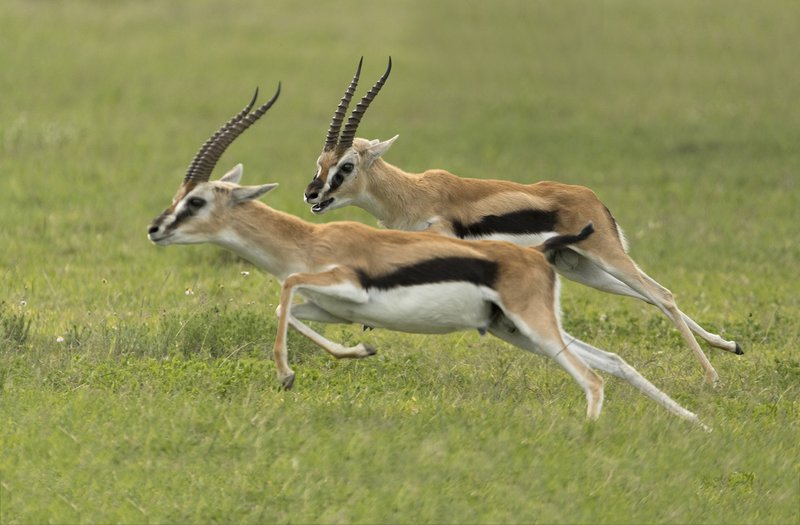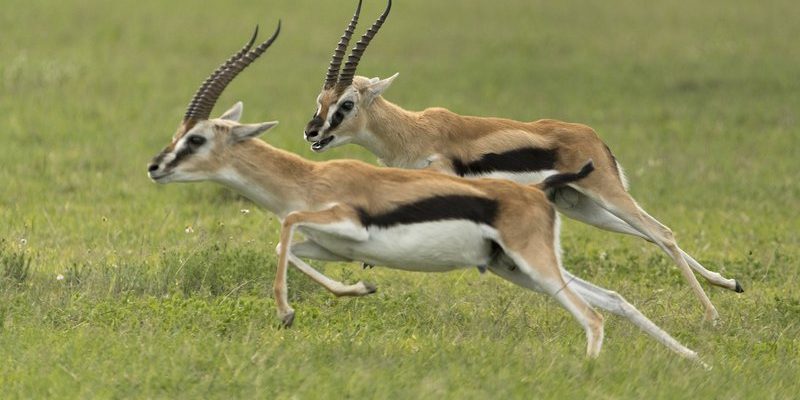
Surviving in harsh environments isn’t just about being fast or sleek; it’s about clever adaptations, social behaviors, and a deep connection to their habitat. From scorching deserts to arid grasslands, let’s dive into how these nimble creatures manage to not just live but flourish in the wild.
Physiological Adaptations for Survival
Gazelles are known for their incredible speed, but there’s a lot more going on beneath that sleek exterior. Their bodies are finely tuned to withstand extreme temperatures and limited water availability. For instance, gazelles can tolerate dehydration better than most animals. They can lose a significant amount of body water before feeling the effects. Isn’t that impressive?
Their digestive systems are also adapted to their diet. Gazelles mostly eat grass and leaves, which they can process efficiently. By being selective grazers, they focus on the most nutritious parts, allowing them to get the essential nutrients they need to survive. This clever diet choice helps them thrive in environments where food may be scarce.
In addition to their diet, gazelles have developed a unique ability to reduce water loss through their urine and feces. Their urine is extremely concentrated, and their droppings are dry. This means they’re conserving as much water as possible, which is crucial for survival in arid environments.
Behavioral Adaptations to Avoid Predators
Living in the wild isn’t just about finding food and water; it also involves a constant game of cat and mouse with predators. Gazelles have developed fascinating strategies to keep one step ahead. One of their most effective tactics is group living. By forming herds, gazelles can look out for each other. When one gazelle spots danger, it’s likely to alert the rest of the group with a warning call.
This social structure not only helps in spotting predators but also in confusing them. Gazelles often use erratic movements to throw off predators. Picture a child in a game of tag—darting left and right, making it hard for their “chaser” to catch up. By zigzagging and changing speeds, gazelles become elusive targets, buying themselves precious moments to escape.
Additionally, gazelles have excellent vision, allowing them to spot threats from a distance. Their eyes are positioned on the sides of their heads, which gives them a wider field of vision. This is like having the ultimate panoramic view of their surroundings, helping them detect potential danger early on.
Water Conservation Techniques
Water is life’s most precious resource, especially in harsh environments where it may be scarce. Gazelles have some pretty smart ways to deal with this challenge. For starters, they adjust their activity levels based on temperature. During the heat of the day, gazelles often seek shade and rest, conserving energy and moisture. It’s similar to how we might take a break and sip some water on a hot summer day.
Another technique is their ability to get moisture from their food. While grazing, they eat plants that are high in water content, which helps them stay hydrated. It’s like snacking on a juicy watermelon instead of a cracker when you’re thirsty.
Interestingly, gazelles can also go without drinking water for long periods. They might drink from ponds or streams when available, but they can survive on the moisture derived from their food for weeks. This remarkable adaptation is crucial for survival in places where water sources are few and far between.
Adaptations to Extreme Temperatures
Life in harsh environments means facing extreme temperatures—from scorching heat during the day to chilly nights. Gazelles have adapted to handle these temperature swings in several ways. Their light-colored coats reflect sunlight, keeping them cooler during the hottest parts of the day. Think of it like wearing a white t-shirt under the blazing sun versus a dark hoodie!
At night, gazelles can utilize their body heat to stay warm. They have a layer of fat that helps insulate them against the cold. When temperatures drop, they huddle together in groups, sharing warmth, much like friends cuddling under a blanket on a chilly night.
Additionally, gazelles are active during the cooler times of day, such as early mornings and late afternoons. This behavior minimizes their exposure to the harshest heat, allowing them to graze and move around without overheating.
Social Structures and Mating Strategies
Gazelles have a fascinating social structure that plays a crucial role in their survival. They form herds, which can vary in size. Being part of a herd provides safety in numbers. You might think of it like a big family; they look out for each other, helping to ensure the group’s survival.
When it comes to mating, male gazelles, called bulls, engage in impressive displays to compete for females. These displays can include leaping high into the air or engaging in physical combat with other males. It’s a bit like a dance-off—only the most impressive dancers get to mate.
Females, or does, often choose mates based on these displays, selecting the strongest and healthiest bulls. This ensures that their offspring have the best chance of survival, passing on desirable traits to the next generation.
The Role of Habitat in Survival
Yet another factor in how gazelles survive is their habitat. They typically thrive in savannas, grasslands, and deserts, environments that provide them with the grasses they love to munch on. It’s a symbiotic relationship—these spaces provide food, while gazelles help maintain the ecosystem by grazing on the vegetation.
Their habitats also offer them the necessary cover to hide from predators. Grassy areas can conceal them, allowing them to avoid detection while they rest or graze. As they move across their territory, gazelles remain aware of their surroundings, always on the lookout for potential threats or good grazing spots.
Interestingly, the availability of resources in their habitat can affect their migration patterns. During dry seasons, gazelles may travel in search of greener pastures. This migratory behavior is essential for finding food and water, much like people moving to a new city for a better job opportunity.
Gazelles are truly remarkable creatures, showcasing incredible adaptations that allow them to thrive in harsh environments. From their ability to conserve water and withstand extreme temperatures to their social structures and behavioral tactics against predators, they are living testaments to the power of adaptation.
Understanding how gazelles navigate their tough world gives us a greater appreciation for their resilience and the delicate balance of ecosystems. Next time you think of these elegant animals, remember they’re not just running for show—they’re masters of survival in a challenging environment! Let’s take a moment to celebrate the wonders of nature and the amazing ways animals adapt to continue thriving, no matter the odds against them.

